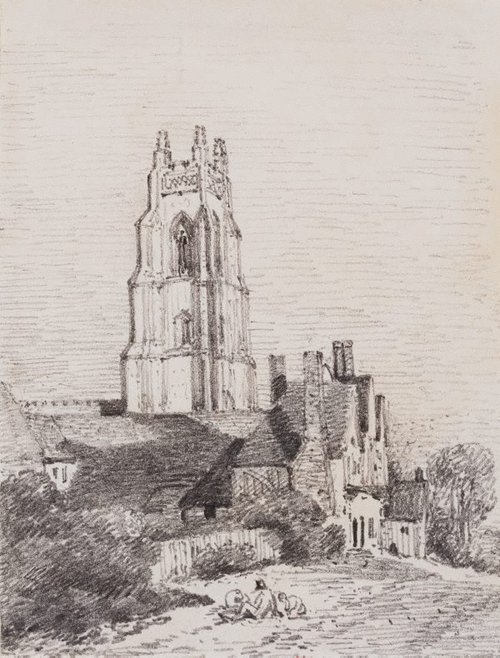John Constable
England
Born: East Bergholt, Suffolk, England 11 Jun 1776
Died: Hampstead, London, England 01 Apr 1837
Biography
Arguably the greatest of British landscape painters, Constable’s vision was a deeply personal one which often focused on sites he knew intimately. His life was for the most part divided between his native Suffolk and London, where he moved permanently in 1816.
Constable was born in the village of East Bergholt on the edge of the Stour Valley where his father was a mill owner, merchant and gentleman farmer. As a teenager he met the collector and amateur painter Sit George Beaumont, who introduced him to the art of Claude Lorrain. He also received some instruction from the painter-antiquarian John Thomas Smith of Edmonton. Having decided to pursue a career as a painter he moved to London in 1799 and gained admittance to the Royal Academy Schools. On his return visits to Suffolk he set about developing an unaffectedly natural style of landscape painting.
His first works show a debt to Thomas Gainsborough as well as Claude, but his main inspiration was from direct observation of nature. To this end he made a series of oil sketches of unprecedented brilliance and immediacy. Seeking new landscape subjects he made trips to northern England in 1801, to Kent in 1803 and to the Lake District in 1806. After this he became deeply committed to depicting the stretch of Suffolk countryside, which even in his own lifetime came to be known as ‘Constable country’. The Stoke-by-Nayland Church was a favourite of the artist’s and appears in a number of paintings and drawings.
On a visit to Salisbury in 1811 Constable met the Rev John Fisher (who became a faithful friend and correspondent) and for the first time painted the cathedral which would become a major source of inspiration in his late landscapes. An improvement in his financial situation after the death of his parents enabled him in 1816 to marry Maria Bicknell and shortly afterwards the couple moved to London.
The success of his large exhibition picture of The white horse at the Royal Academy in 1819 was followed by his much delayed election as an associate of the Academy. From 1819, as a consequence of Maria’s poor health, the couple rented a cottage in Hampstead, where the neighbouring heath now provided Constable with a new source of inspiration. In particular it was at this time that he started making his famous series of cloud studies.
In 1823 Constable received an invitation to stay with Beaumont at his Leicestershire home of Coleorton Hall. It was there that he painted Landscape with a goatherd and goats (after Claude) 1823, which was a faithful copy of a Claude painting by the same name in Beaumont’s possession (now in the collection of the National Gallery, London). On 5 November he wrote to Maria that the Claude ‘contains almost all that I wish to do in a landscape’.
In 1824, with his wife’s tuberculosis worsening, Constable took lodgings in Brighton and on his visits there painted a number of scenes of the beach and pier. In 1827 the family settled in Hampstead, but Maria died the following year. By this time Constable’s work was much celebrated in France while in England it continued to receive a more equivocal response. The artist’s election as an academician did not finally come until 1828. In the 1830s he saw to the engraving of many of his works by David Lucas in mezzotint and also delivered lectures on the history of landscape painting.

